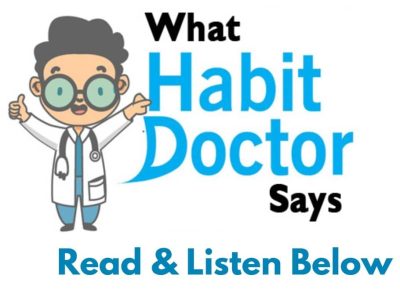We all have routines some as comforting as a favorite warm drink, others as confining as a locked door. The difference between the habits we cherish and the ones that hold us back often comes down to how aware we are of their role in our lives. Ever wondered why it’s so hard to break free from cycles of procrastination, negative self-talk, or endless scrolling? Here’s an idea you might not have tried: using contrast habits to interrupt and transform those patterns.
This article unpacks what contrast habits are, how they work, and practical ways to use them to break limiting cycles. We’ll explore real-world examples and actionable steps, along with a sprinkle of personal reflection. Ready for a new angle on changing the habits that keep you stuck? Let’s dive in.
Understanding Contrast Habits
Before we jump into solutions, let’s get clear on the basics.
What Are Contrast Habits?
Contrast habits are intentional behavioral choices or routines that sharply differ from your usual patterns often the very ones you hope to change. By deliberately introducing an action that runs counter to your ingrained habits, you create mental and emotional space for new possibilities.
For instance:
- If you typically deal with stress by retreating inward, a contrast habit might be to reach out and talk to someone.
- If you’re prone to snacking when bored, a contrast habit could be taking a brisk walk or drinking a glass of water instead.
The idea isn’t to shame or fight your existing habits. Instead, you’re injecting something different that helps nudge your mind away from autopilot.
Key Insight: Contrast habits are not about radical overnight shifts. They’re about gently, consistently offering yourself a new option when old cycles would otherwise take over.
Why Limiting Cycles Are So Hard to Break
Let’s be honest: If breaking cycles were easy, you probably wouldn’t be reading this. Limiting habits persist for many reasons.
The Power of Routine
Our brains are designed to love efficiency. Once a pattern gets established like stress leading to late-night snacking it becomes a well-worn neural pathway.
- Familiarity is comforting, even when the outcome isn’t what we want.
- The brain rewards routines with feel-good chemicals like dopamin.
Emotional Triggers
Often, our limiting cycles are fueled by emotions we’re not even fully aware of. Boredom, anxiety, and even excitement can trigger habits that don’t serve us in the long run.
Personal Note: I used to reach for my phone whenever I felt anxious in social settings. It was easier than sitting with discomfort but it also kept me from connecting with the people right in front of me.
How Contrast Habits Disrupt the Cycle
The real magic of a contrast habit is that it lets you step outside your default mode, even if just for a moment.
Creating Cognitive Dissonance
When you do something different from your usual pattern, it creates a subtle internal tension the fancy term is “cognitive dissonance.” Your brain notices the change, which gives you a split-second window to make a new choice.
- This “shock to the system” can be small letting yourself pause before reacting, for example.
- Over time, it can weaken the power of the old habit loop.
Developing New Associations
Over time, contrast habits can help you build fresh associations with certain emotions or situations. In other words, you stop pairing stress with ice cream and start associating it with a healthy alternative.
Practical Ways to Use Contrast Habits
Ready to try this in your own life? Here’s a step-by-step approach.
1. Identify Your Limiting Cycle
Start by pinpointing one habit or cycle you’d like to change.
- Is it related to procrastination, emotional eating, self-criticism?
- Be specific: When does it happen? What triggers it?
2. Choose a Simple Contrast Action
Pick an action that’s noticeably different but still doable. Here are some examples:
Example: The Social Media Rabbit Hole
- Current Cycle: Feeling bored leads to mindless scrolling.
- Contrast Habit: Next time the urge to scroll pops up, try setting a timer for two minutes and writing down three things you notice in your environment instead.
Example: Avoiding Difficult Conversations
- Current Cycle: Shut down when conflict arises.
- Contrast Habit: Commit to asking one clarifying question before exiting the conversation.
3. Pair the Contrast Habit with Your Trigger
The trick is not to wait for the “perfect” moment. Whenever you spot the cycle beginning, use your contrast habit even if you’re not sure it will “work.”
- Keep the action small and simple.
- The goal is consistency, not perfection.
4. Celebrate Small Wins
Even one interruption is progress. Reinforcing the change helps your brain make the new connection stronger.
Callout: “Every time you choose a contrast habit, you send your brain a message: ‘I can do things differently.’ Over time, these tiny moments add up to real change.”
When to Use Contrast Habits: Real-Life Scenarios
Contrast habits work best in moments when your autopilot wants to take over. Let’s look at some situations where you might apply them.
At Work
- Switching from ruminating over mistakes to jotting down what you learned.
- Replacing a third cup of coffee with stretching or deep breathing.
With Family
- Shifting from defensiveness in an argument to active listening.
- Replacing the urge to “fix” everything with offering support or asking questions.
In Self-Care
- Swapping negative self-talk for a self-compassionate statement (even if you don’t fully believe it at first).
- Using movement walking around the block when the urge to snack emotionally arises.
Sidestepping Common Pitfalls
Contrast habits aren’t a magic pill, and you’ll probably trip up along the way. Here are a few reminders to keep in mind:
- Expect initial discomfort. That awkwardness signals growth.
- If you forget to use your contrast habit, avoid self-criticism. Just try again next time.
- Change takes time. It’s okay if some cycles stick around longer.
Quote to Remember: “You don’t have to believe in a habit for it to start helping you. Sometimes, the habit grows on you.”
Conclusion: Give Yourself a Contrast
Breaking limiting cycles can feel frustrating, but contrast habits offer a gentle way to try something new one small step at a time. By identifying your triggers and choosing simple, opposite actions, you give your mind space to start building new pathways.
What’s one contrast habit you can try this week? Whether it’s pausing before reacting, moving your body instead of reaching for your phone, or sending a kind message to yourself, remember: change is built one choice at a time.


